HM The King
CARL GUSTAF Folke Hubertus, King of Sweden, born on 30 April, 1946, ascended the throne on 15 September 1973. Carl XVI Gustaf is the seventh king of the House of Bernadotte and the longest reigning monarch in Swedish history. The King's motto is: “For Sweden – With the times”.
Duties as Head of State
HM The King's duties as Head of State
The King or Queen who occupies the throne of Sweden in accordance with the Act of Succession shall be the Head of State.
Chapter 1, § 5 of the Instrument of Government
As Head of State, HM The King primarily has state ceremonial and official duties, which are regulated by the Swedish Constitution.
The King's duties include the following:
Opening the Parliamentary Session. This takes place every year in September, and marks the beginning of the Riksdag's working year. The ceremony is held in the Riksdag's assembly hall, where The King also gives a speech to the members of the Riksdag.
Chairing councils with the Government. There are different types of council. A Change of Government Council is held when a new Government takes up its duties. Councils of State are held regularly so that ministers can inform the Head of State and the heir to the throne about the Government's policies. When a child is born into the Royal Court, The King also convenes a council to inform the Government of the child's name and title.
Chairing Advisory Councils on Foreign Affairs. An Advisory Council on Foreign Affairs is a body for foreign policy discussions between the Government and the Riksdag.
Carrying out state visits. The King represents Sweden during incoming and outgoing state visits. State visits are used to build personal relationships between countries, and aim to increase exchanges within various areas. These visits are planned in consultation with the Government, and signify good relations between the nations involved.
Accrediting ambassadors. Each year, The King receives around 30–40 newly appointed foreign ambassadors during formal audiences. Foreign envoys are received by the Head of State during a traditional ceremony known as a formal audience. According to international practice, incoming ambassadors cannot formally work in a country until they have submitted their credentials to the host country's head of state.
The King is the most senior representative of the Swedish Armed Forces. He is an admiral of the Navy and a general of the Army and the Air Force. The King is Honorary Commander of the Life Guards and the Life Regiment Hussars.
The King is the Grand Master of the Royal Swedish Orders of Chivalry.
The King is a member of the Church of Sweden.
Biography
HM The King's biography
HM The King was born at Haga Palace in Solna at 10:20 on 30 April 1946, and was the first son of Heir Apparent Gustaf Adolf and Princess Sibylla.
To announce the news that an heir to the throne had been born, the cannons were fired at all of the country's salute stations and larger naval ships immediately after the birth.
Prime Minister Per Albin Hansson, Minister for Foreign Affairs Östen Undén, Marshal of the Realm Axel Vennersten and Mistress of the Robes Baroness Louise Rålamb signed a Statement of Witness at Haga Palace following the birth.
At an Extraordinary Council of State that same day, King Gustaf V announced that the newborn heir to the throne had been named Carl Gustaf Folke Hubertus, and had been given the title Duke of Jämtland.
Prince Carl Gustaf was christened by Archbishop Erling Eidem in the Royal Chapel on 7 June that year. In connection with the christening, the Order of the Seraphim was conferred on the young prince by his great-grandfather. His godparents were King Gustaf V, Crown Prince Gustaf (VI) Adolf, Crown Prince Frederik (IX) and Crown Princess Ingrid of Denmark, Crown Prince Olav (V) of Norway, Princess Juliana of the Netherlands, Duke Karl Edvard of Saxe-Coburg and Gotha, and Count Folke Bernadotte af Wisborg and his sister Countess Maria Bernadotte af Wisborg.

The King, photographed with (from left) his grandfather Crown Prince Gustaf (VI) Adolf, his father Heir Apparent Gustaf Adolf and his great-grandfather King Gustaf V on the occasion of his christening on 7 June 1946. Photo from the Bernadotte Library's image archive.
The King was the son of the Heir Apparent Prince Gustaf Adolf and Princess Sibylla. His Majesty has four older sisters: Princesses Margaretha, Birgitta, Désirée and Christina, known as 'the Haga Princesses'. At the time of The King's birth, the family lived at Haga Palace.
Heir Apparent Gustaf Adolf (The King's father, and the eldest son of King Gustaf VI Adolf) died on 26 January 1947 in a plane crash at Copenhagen Airport.
After his death, the family – Princess Sibylla, Heir Apparent Carl Gustaf and his four sisters – moved from Haga Palace to an apartment at the Royal Palace in Stockholm.
On 29 October 1950, on the death of King Gustaf V and King Gustaf VI Adolf's ascension to the throne, Heir Apparent Carl Gustaf became Crown Prince of Sweden.
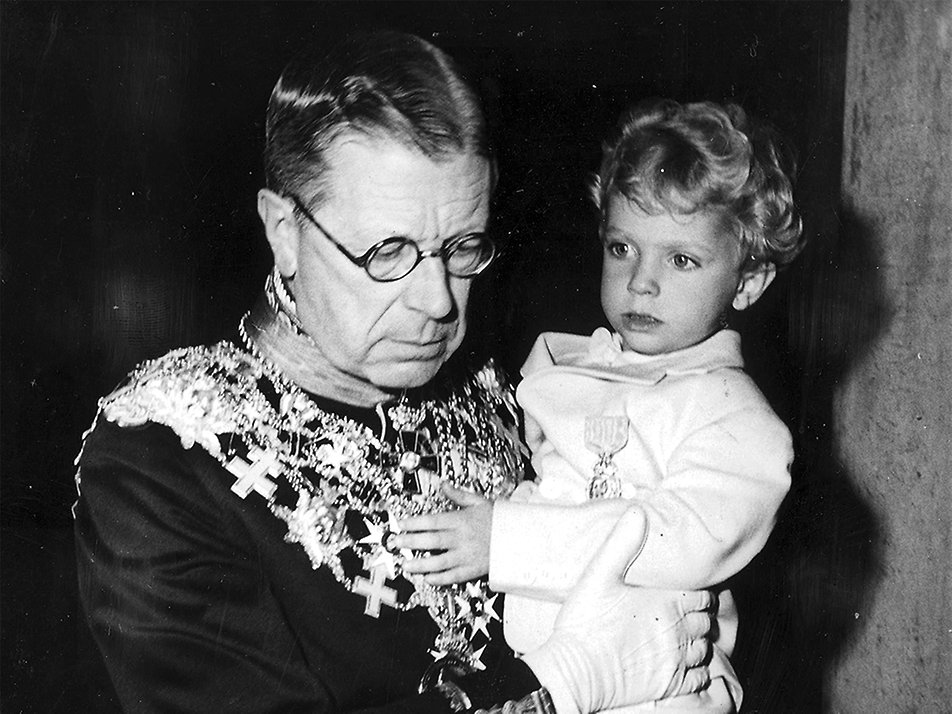
The new King Gustaf VI Adolf holding Crown Prince Carl Gustaf. Photo from the Bernadotte Library's image archive.
Princess Sibylla and her children spent their summers at Solliden on Öland. In his will, King Gustaf V had left Solliden to his great-grandson, Prince Carl Gustaf. The Royal Family spent Christmases at Drottningholm, which at the time was mainly inhabited during the winter. The Easter holidays were spent skiing in Dalarna.
As a young boy, Scouting was a great interest of the Crown Prince. He became a Cub Scout (called Mowgli) in 1955, and a Scout in 1958. One of his first official duties, aged ten, was his participation at a Swedish Scout camp.
Education, confirmation and Oath of Allegiance
The 7-year-old Crown Prince began attending Broms School in Stockholm on 1 September 1953.

The Crown Prince's first day at Broms School. Photo: Historisk Bildbyrå
After the 6th grade, The Crown Prince's schooling at Broms School ended. On 31 August 1959, he moved to Sigtuna Humanistiska Läroverk secondary school for his secondary and upper secondary studies.
In 1962, The Crown Prince was confirmed at Borgholm Church on Öland.

The King during his confirmation on Öland. In the background are King Gustaf VI Adolf, Queen Ingrid of Denmark, Princess Sibylla and The King's sisters. Photo from the Bernadotte Library's image archive.
On 12 January 1965, when The Crown Prince had come of age, he swore the Oath of Allegiance in front of The King and the Riksdag at the Opening of the Parliamentary Session in the Hall of State at the Royal Palace.
The Crown Prince graduated from his high school studies in natural sciences on 22 April 1966. He wrote his student dissertation on the main conditions for the regional differentiation of European agricultural production.
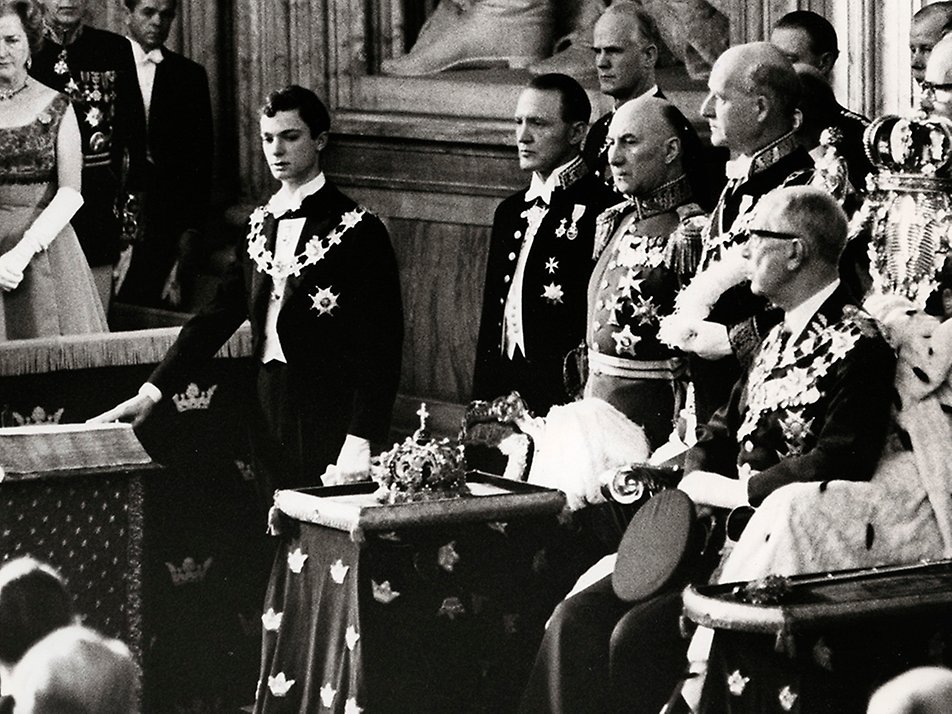
The Crown Prince swears the Oath of Allegiance in front of King Gustaf VI Adolf and the Riksdag at the Opening of the Parliamentary Session in 1965. Photo from the Bernadotte Library's image archive.
Military service
In summer 1966, The Crown Prince embarked on his military training, which began in the Royal Navy. This included taking part in a round-the-world sailing on board HMS Älvsnabben. After his naval training, The Crown Prince also had the opportunity to train with the Army and the Air Force. Following his studies at Karlberg, The Crown Prince had achieved the rank of Second Lieutenant in the three-armed forces. The Crown Prince subsequently completed the Swedish Defence University's management course.

The King during his round-the-world sailing on board HMS Älvsnabben. Photo: TT's image archive
Academic studies
In 1968, The Crown Prince began a special academic education programme including courses in history, sociology, political science, financial law and economics at Uppsala University. He also studied courses in national economics at Stockholm University.
Further social studies
In addition to his academic studies, the future Head of State was also given special education about Swedish society. The Crown Prince carried out several study visits, including to the Swedish Trade Union Confederation and the Swedish Employers' Confederation, news editorial teams, ministries, banks and industries. In order to get a greater insight into the Swedish Foreign Service, The Crown Prince spent a period working at the Swedish UN Delegation in New York and at the Swedish Embassy in London.
Ascending to the throne
When King Gustaf VI Adolf died at Helsingborg General Hospital on 15 September 1973, The Crown Prince became King of Sweden at the age of 27. The enthronement ceremonies took place on 19 September. The King swore the King's Oath in the Cabinet Meeting Room at the Royal Palace, in the presence of the Government.
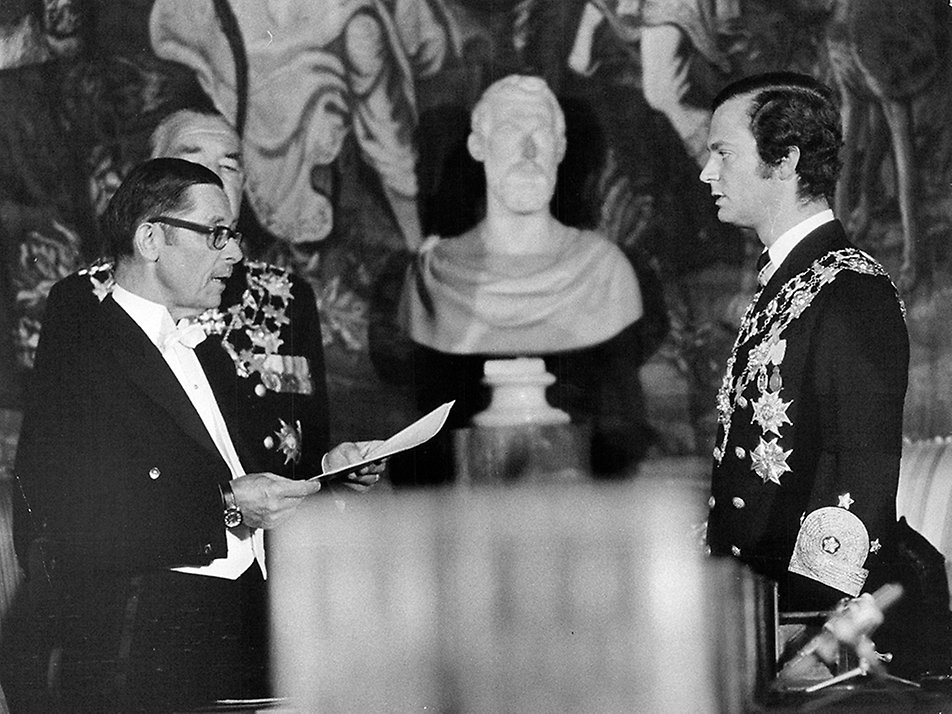
Minister for Justice Lennart Geijer administers the King's Oath to King Carl XVI Gustaf in the Cabinet Meeting Room at the Royal Palace. Photo: TT
During his meeting with the Government, The King also announced his regnal name, his regnal title and his motto.
Since my dear ancestor, King of Sweden, the Goths and the Wends Gustaf VI Adolf has died, I have succeeded Him as King of our nation. My regnal name shall be Carl XVI Gustaf, my regnal title shall be King of Sweden, and my motto shall be For Sweden – With the Times.
HM The King during the Council of State at the Royal Palace on 19 September 1973
The King then appeared before the Riksdag, the diplomatic corps and official Sweden, for a ceremony in the Hall of State during which he gave a speech in remembrance of his deceased grandfather from Queen Kristina's silver throne.

The King during his accession to the throne on 19 September 1973. Photo from the Bernadotte Library's image archive.
King and Head of State
During his initial time as Head of State, in addition to leading weekly councils with the Government in accordance with the Instrument of Government that applied at the time, The King also began a long list of visits within Sweden and abroad.
Following his ascension to the throne, The King toured all of Sweden's counties. The first county visited by The King in March 1974 was Jämtland, the duchy he had been assigned by King Gustaf V at the time of his birth.

The King arrives at Gothenburg Central Station to begin his tour of Gothenburg and Bohus County in September 1974. Photo: Leif Jansson/TT
His tour then continued over the course of several years, concluding in 1990.
The King paid his first state visit in October 1974, to King Olav V of Norway. He then visited the other Nordic countries.
Marriage and family
The engagement between HM The King and Miss Silvia Renate Sommerlath was announced on 12 March 1976. The wedding took place in Stockholm Cathedral on Saturday 19 June 1976.

The royal wedding on 19 June 1976. Photo from the Bernadotte Library's image archive
The Crown Prince and Miss Sommerlath had met at the 1972 Olympic Games in Munich.
The King and Queen have three children: Crown Princess Victoria, born in 1977, Prince Carl Philip, born in 1979, and Princess Madeleine, born in 1982.
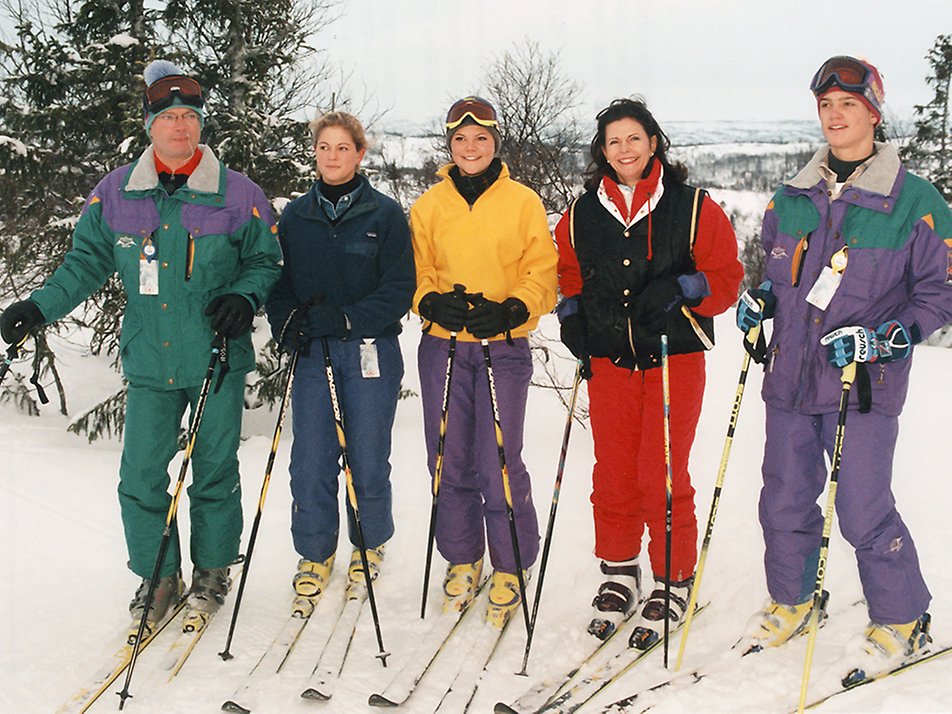
The Royal Family during a press photography session outside their cottage in Storlien, Jämtland, in winter 1997. Photo: Erhan Güner/TT
For the first few years, the Royal Family lived in an apartment at the Royal Palace in Stockholm. In 1982, The King and Queen and their children moved to Drottningholm Palace. Since moving there, the Royal Family have continued to use the Royal Palace – which remains HM The King's official residence – as their place of work.
Interests and commitments
HM The King's personal interests and commitments
The environment, nature and outdoor activities
Since his early childhood, The King has taken a keen interest in nature and outdoor activities. This has formed the basis for his long commitment to issues relating to the environment and conservation.
In 1972, The King attended the UN's first environmental conference, which was held in Stockholm. In 1992, he initiated a series of royal environmental colloquiums, at which researchers, representatives from industry and decision-makers were invited over a period of 25 years to discuss topical environmental issues.

The King at the UN's first environmental conference in 1972. One hundred and fourteen nations were represented at the conference, which took place in Stockholm. Photo: Olle Lindeborg/TT
The King has a great interest in fishing, hunting and game preservation. He has been a keen huntsman since his youth, arranging and participating in annual hunts. He inherited a fishing cottage in Forsavan, Västerbotten, from his grandfather King Gustaf VI Adolf. Since 1929, The King has logged all the fish caught at the cottage. This data is now being used in a research project as part of an initiative taken by The King on sustainable fishing in the mountains of Västerbotten.

The King in one of Stenhammar's pastures in 1975. The King now practises organic farming at Stenhammar. Photo: Kent Östlund/TT
Since 1965, The King has leased the Stenhammar Estate near Flen in Södermanland. The King is personally involved in the work at the estate, where modern agriculture and forestry are carried out. The farm's animal husbandry is organic.
Scouting
Ever since his youth, HM The King has been involved in Scouting and the Scout movement. The Young Leadership Foundation was established ahead of The King's 60th birthday, with the aim of promoting training for young people in leadership skills, based on the values of the Scout movement.
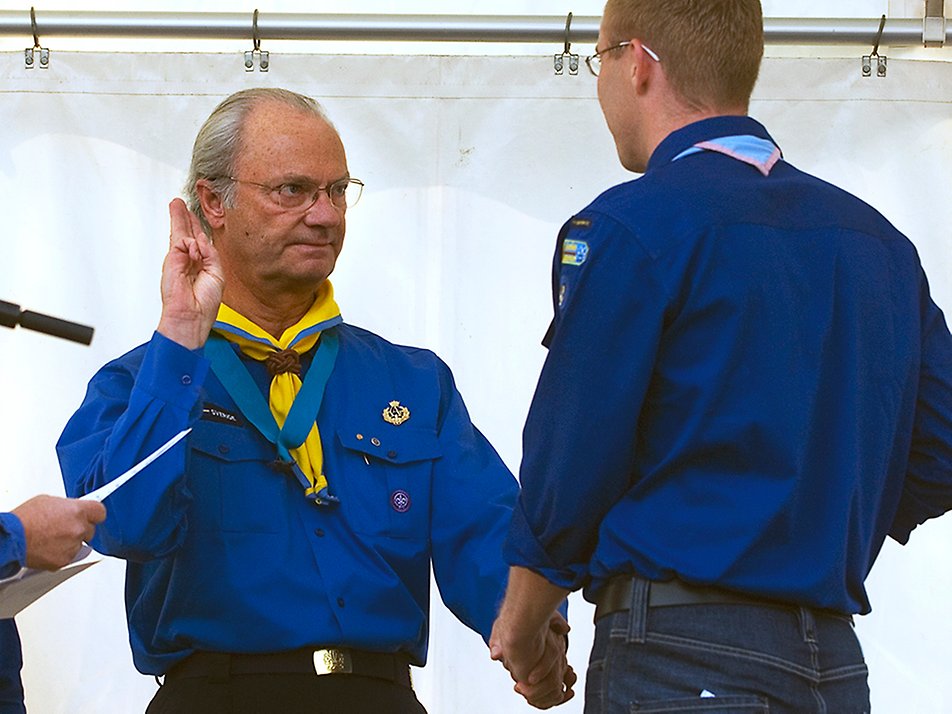
The King opens a Scout hut in Huddinge in 2006. Photo: Leif R Jansson/TT
Each year, The King presents the Young Leadership Foundation's Compass Rose Scholarship to young people who have demonstrated courage, consideration and energy in their leadership.
The King is First Honorary Member of the Swedish Guide and Scout Association, an honorary member of the Swedish Guide and Scout Council and, since 1977, Honorary Chairman of the World Scout Foundation. As Honorary Chairman, The King is also involved in the Baden-Powell Fellowship.
Technology and cars
The King showed a keen interest in cars and tools from an early age. On his fifth birthday, he received a pedal car, a trowel, bricks, gardening tools and a yoke with two buckets. He remains interested in motoring to this day. At the annual Swedish King's Rally on Öland, he drives a 1946 Volvo PV 60, which he received on his 50th birthday.

The King in his 1946 Volvo PV60 during the King's Rally on Öland in 1998. Photo: Jonas Ekströmer/TT
The King has taken an interest in science and technology since his childhood. Since 1984, the Royal Swedish Academy of Engineering Sciences (IVA) has arranged Royal Technology Missions at The King's initiative, with a focus on science, technology and industry. Swedish business leaders and representatives from agencies and educational institutions take part in these visits, which aim to forge new contacts that can lead to a greater exchange of ideas and business.
Art, music and food
The King has a great interest in art, particularly graphic art. He collects silver by Swedish designers and art by Swedish artists and is especially interested in Sami crafts.
Music is another of The King's cultural interests, and he enjoys attending concerts and opera performances both in Stockholm and around the country.

The King presents the Polar Music Prize to Stevie Wonder in 1999. Photo: Janerik Henriksson/TT
The King also takes a keen interest in culinary matters, and is an active member of the Gastronomic Academy.
Sport
Supporting Swedish athletes is important to The King, who follows both summer and winter sports and often attends the Olympic Games and other international competitions.

The King with the national football team at the 2016 Summer Olympic Games in Rio de Janeiro. Photo: Tobias Röstlund/TT
The King is also a keen winter sportsman himself. Every year, The King and Queen visit their cottage in Storlien, among the mountains of Jämtland, where they enjoy both cross-country skiing and downhill skiing. The King has taken part in the marathon Vasaloppet ski race on three occasions.
During the summer months, The King enjoys spending time in the forest, in the countryside and on the water.
Official portraits




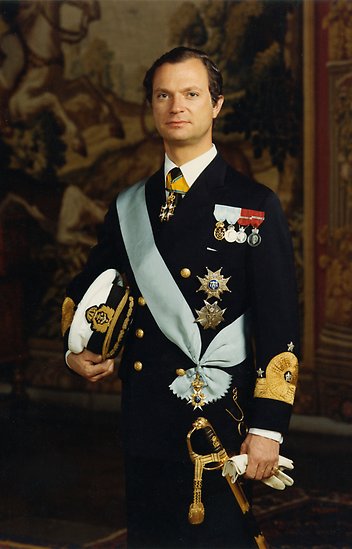
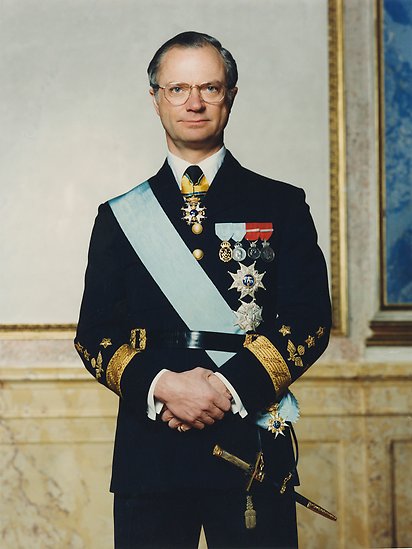









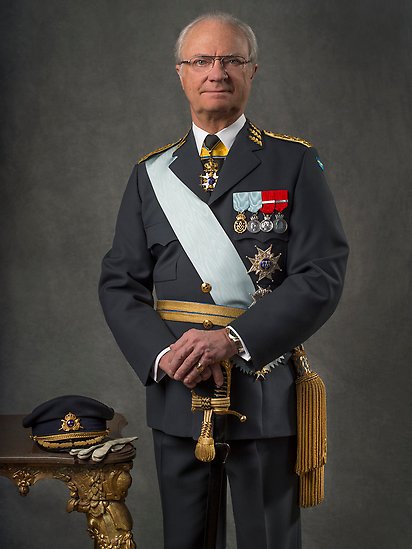

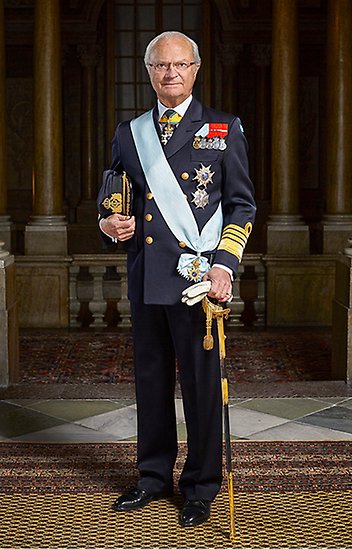
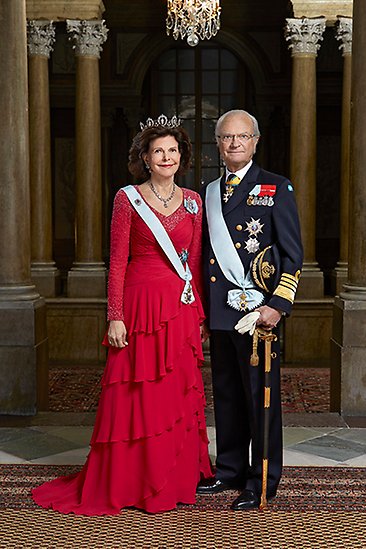



The King through the years





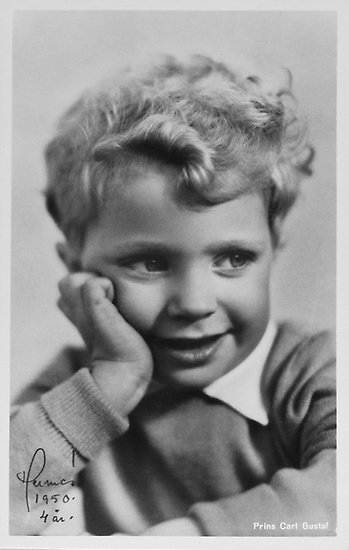


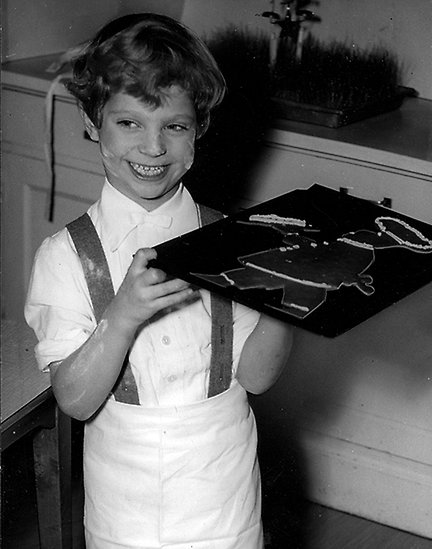

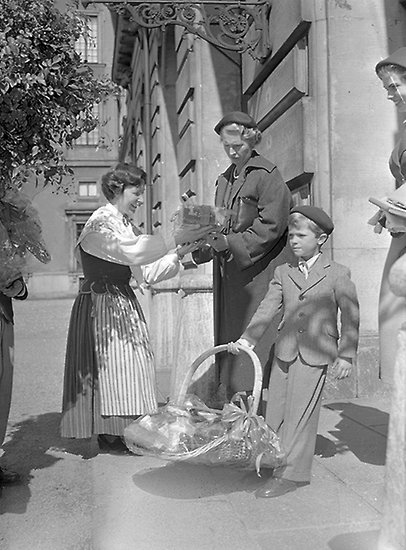
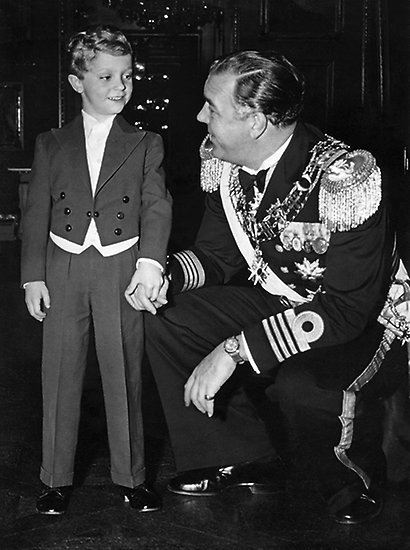






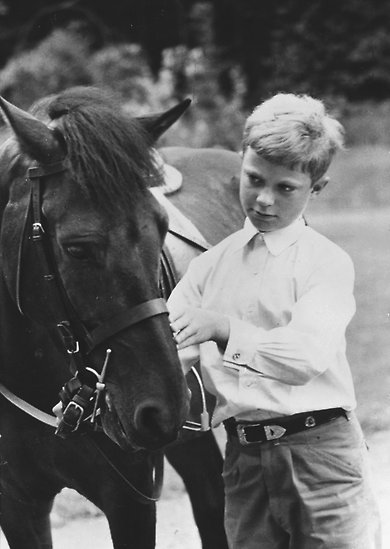






.jpg)
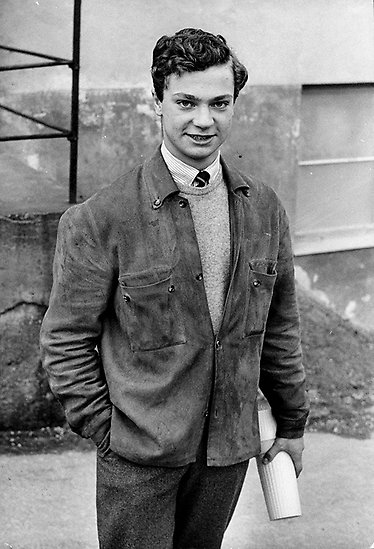





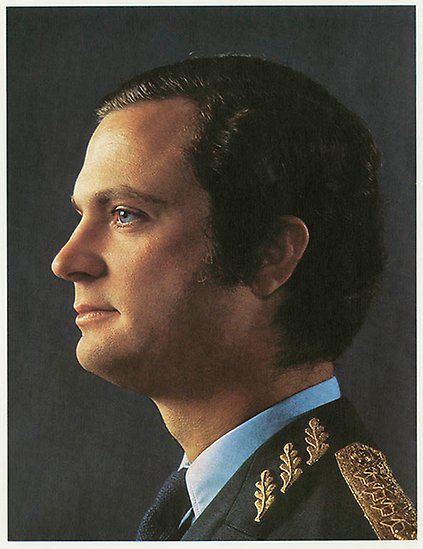









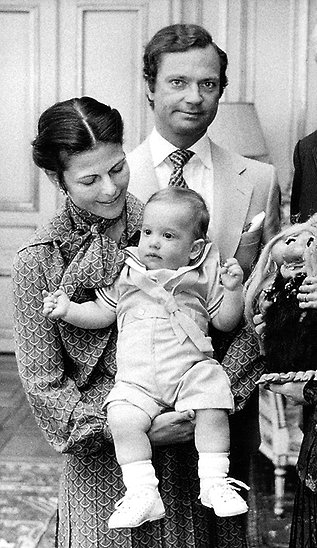



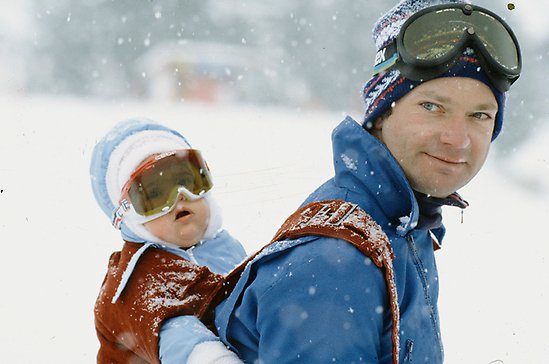
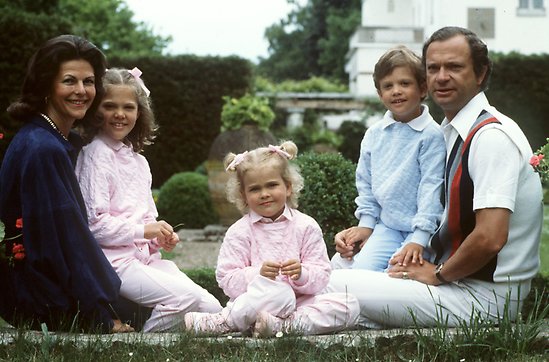







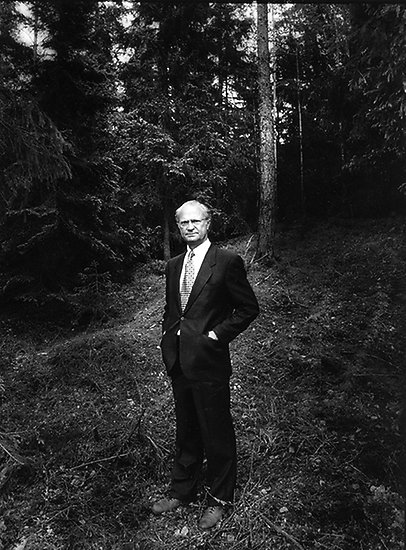










.jpg)
.jpg)



-foto-Sven-%C3%85ke-Visen-SVT.jpg)

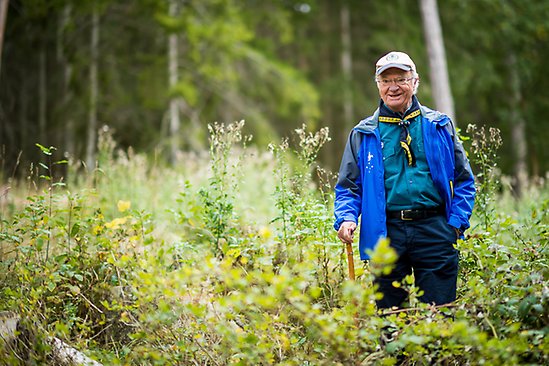

Symbols
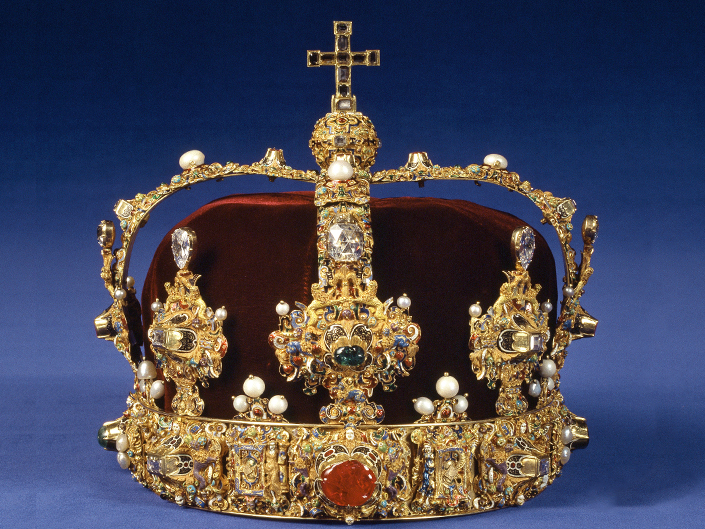
The King's crown
Erik XIV's crown from 1561 is the crown of the Swedish sovereign.

The King's seraphim shield
HM The King's seraphim shield, made by coat of arms painter David Friefeldt.

The King's flag
The three-tongued flag with the National Arms of Sweden is HM The King's flag.

The King's monogram
Two monograms are used today by HM The King. In addition, the King and Queen have a joint monogram.

The King's command flag
HM The King’s presence in military ceremonies is indicated by the King’s command flag.
The King's recent speeches
-
HM The King's speech at Business Forum during the state visit from Finland
23 April 2024Finland and Sweden share more than 600 years of common history. Today, we are closer than perhaps ever in modern times....
Speeches -
HM The King's speech at the dinner of the Governor of Yucatán
15 March 2024Her Majesty the Queen and I would like to extend our deepest appreciation to the Governor of Yucatán and Ms. Ortiz Abrah...
Speeches -
HM The King's speech at Business Forum during the state visit in Mexico
14 March 2024It is a great honor for me to have the opportunity to talk about the excellent trade relations between our countries at ...
Speeches
Orders
HM The King's orders
List of HM The King's foreign order holdings.
Republic of Argentina
- The Order of the Liberator General San Martin, Grand Cross with Collar
Republic of Austria
- The Decoration of Honor for Services to the Republic of Austria, Grand Star
Kingdom of Belgium
- The Order of Leopold, Grand Cross
Federal Republic of Brazil
- The Order of the Southern Cross, Grand Cross with Collar
- The Order of Merit of the Congress of Brazil with Collar
- The State of Bahia, Order of Merit
- The State of Sao Paulo, Grand Cross of the Order of Ipiranga
- The State of Sao Paulo, Order of Industrial Merit
Republic of Croatia
- The Order of King Tomislav, 1st Class
Brunei Darussalam
- The Royal Family Order of the Crown of Brunei
Republic of Bulgaria
- The Order of Stara Planina, Grand Cross
Republic of Chile
- The Order of Merit, Grand Cross
- The Order of Bernardo O'Higgins, Grand Cross with Collar
Kingdom of Denmark
- The Order of the Elephant, Knight
- The Order of the Dannebrog, Grand Commander
Arab Republic of Egypt
- The Order of the Nile with Collar
Republic of Estonia
- The Order of the White Star, Collar of the Order
- The Order of the Cross of Terra Mariana, Collar of the Order
Republic of Finland
- The Order of the White Rose, Grand Cross with Collar
Republic of France
- The Order of the Legion of Honor, Grand Cross
Federal Republic of Germany
- The Order of Merit of the Federal Republic of Germany, Grand Cross special class
Republic of Greece
- The Order of the Redeemer, Grand Cross
- The Collar of the Mayor of Athens
Republic of Iceland
- The Order of the Falcon, Grand Cross with Collar
Republic of Indonesia
- The Order of the Star of the Republic of Indonesia, 1st Class
Republic of Italy
- The Order of Merit of the Italian Republic, Grand Cross with Collar
Japan
- The Imperial Order of the Chrysanthemum, Grand Cordon, with Collar
The Hashemite Kingdom of Jordan
- The Order of Al-Hussein bin Ali, with Collar
Republic of Korea
- The Grand Order of Mugunhwa
Republic of Latvia
- The Order of the Three Stars, Grand Cross, with Collar
- The Order of Viestur, 1st Class
Republic of Lithuania
- The Order of Vytautas the Great with the Golden Chain
Grand Duchy of Luxemburg
- The Order of the Gold Lion of the House of Nassau, Knight
Malaysia
- The Most Exalted Order of the Crown of the Realm, Grand Cross and Collar
The United Mexican States
- The Order of the Aztek Eagle, Grand Cross with Collar
Kingdom of the Netherlands
- The Order of the Netherlands Lion, Knight Grand Cross
- The Order of the Golden Arch
- The Order of the House of Orange, Grand Cross
Kingdom of Norway
- The Royal Norwegian Order of S:t Olav, Grand Cross with Collar
- The Centenary Commemorative Medal of King Haakon VII
- The Silver Jubilee Medal, King Harald V
- The Silver Jubilee Medal, King Olav V
Republic of Poland
- The Order of the White Eagle, Knight
Republic of Portugal
- The Order of S:t Jacob, Grand Cross with Collar
- The Order of Infante Dom Henrique, Grand Cross with Collar
Romania
- The Order of the Star of Romania, with Collar
- (The Order of the Star of the Peoples Republic of Romania, 1st Class)
Sachsen-Coburg-Gotha
- The Sachsen Ernestine House Order, Grand Cross
Kingdom of Saudi Arabia
- The Collar of the Order of Abdul Aziz Al Saud
Republic of Slovakia
- The Order of the White Double Cross, 1st Class
Republic of Slovenia
- The Order for Exceptional Merits
Kingdom of Spain
- The Distinguished Order of the Golden Fleece, Knight
- The Royal and Distinguished Order of Charles III, Grand Cross
Republic of South Africa
- The Order of Good Hope, Grand Cross in Gold
Kingdom of Thailand
- The Most Auspicious Order of the Rajamitrabhorn with Collar
Republic of Tunisia
- The Order of Merit of the Republic of Tunisia, 1st Class
Republic of Turkey
- The Order of Merit of the Republic of Turkey
Ukraine
- The Order of Prince Jaroslav the Wise, 1st Class
- The Order of Freedom
United Kingdom of Great Britain and Northern Ireland
- The Most Noble Order of the Garter, Knight
- The Royal Victorian Chain
Hungary
- The Order of Merit, Grand Cross
The Vatican State
- The Order of Pius IX, Grand Cross with Collar
Yugoslavia
- The Yugoslav Great Star
Jubilee 2023
2023 was a double jubilee, marking King Carl XVI Gustaf’s 50th jubilee – and also 500 years since Gustav Vasa was elected king in 1523 – ushering in a new era that shaped modern Sweden.
Read more about exhibitions and county visits during the year, national day celebrations and anniversary weekend.

Jubilee visits in Sweden's counties
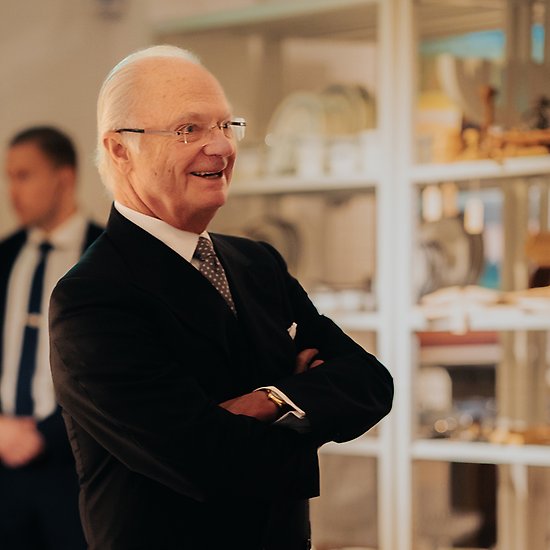
Photos from the jubilee visits
As part of the celebration of HM The King's 50th anniversary on the throne, The King and Queen visited Sweden's 21 counties in 2023.


